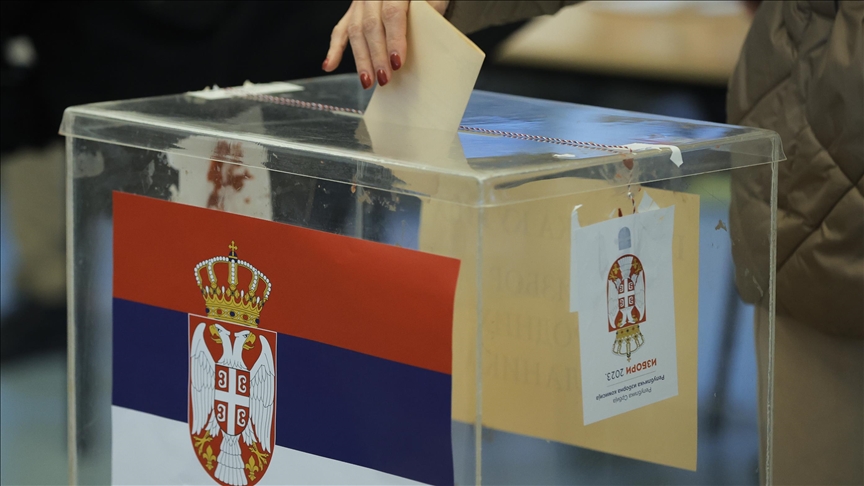

A Sore Defeat
Last Sunday, on June 2 2024, Serbia held repeated Belgrade elections and municipal elections in roughly two thirds of the country’s municipalities. As predicted, the ruling coalition won almost all of them. In Belgrade, the coalition led by the Serbian Progressive Party loyal to President Aleksandar Vučić emerged victorious with 52,6 percent of the vote, the second was the newcomer in the electoral process citizens’ movement Kreni-Promeni (Move-Change) with 17,5 percent; Biram borbu (I Choose to Fight), the part of the former Serbia Against Violence coalition that decided not to boycott the elections, came in third with 12,5 percent, the right-wing populist Mi–Glas iz Naroda (We–The Voice of the People) won 8,1 percent, whereas other smaller contenders remained below the threshold to enter the city assembly. After the third attempt to retain power in the capital in two years, the ruling party finally succeeded.
Despite some hope, the opposition did not manage to win the majority in the city of Novi Sad and in most municipalities across the country, and where they did manage to defeat the ruling party (the city of Niš, New Belgrade municipality and a handful of others) the Vučić-led alliance is trying to remain in power by rigging the electoral results.
There are two related reasons for the opposition’s electoral defeat: catastrophic electoral conditions, and a low turnout partially caused by the boycott of the elections by a part of the opposition.
Despite mainly formal adjustments on the part of the government, there were very few improvements compared to the fraudulent December 17 elections. The ruling party maintained almost total control of the country’s media, President Vučić continued to borrow his name to the ruling electoral lists in a clear breach of the country’s constitution, while the vote buying, voter migration and electoral violence against the opposition persisted. It is precisely those deeply uneven electoral conditions that caused the split of the large opposition coalition Serbia Against Violence. Whereas one part (I Choose to Fight) decided to run despite catastrophic conditions, the rest of the pro-European opposition opted for boycott.
Whereas turnout in local elections when held separately from parliamentary or presidential elections is traditionally lower in Serbia, the lack of unity of the main opposition bloc additionally contributed to the abstention. In contrast with December 17, 2023, when almost 59 percent came out to vote, this time around the turnout was only 46,5 percent. Lower turnout disproportionally hit the opposition bloc. Compared to last year, the opposition lost five times more votes than the ruling party. By June 2, the momentum of the months-long protests that took place in 2023 was lost and the apathy of the average voter prevailed.
It is, however, interesting that despite enlarging the Serbian Progressive Party-led coalition (from the nationalist left Socialists to the extreme right Serbian Radical Party or Zavetnici – The Oathkeepers) in a single bloc, the ruling party has been consistently losing votes in Belgrade: from 509,000 in 2018, to 476,000 in 2022, 411,000 in 2023 to 362,000 in these elections. After more than 12 years in power, the downward trend of the ruling bloc in the city of Belgrade is constant and, albeit less pronounced, also reflected at the national level.
2027 Countdown: No Democracy without Unity
The next parliamentary and presidential elections in Serbia are scheduled in three years. Unless Russian-style amendments to the Serbian constitution are made, president Vučić cannot be reelected as president. He will thus be confronted with two options: either he follows Putin’s footsteps and turns the country into an overt dictatorship or he tries to stay in power by means more amenable with Serbia’s EU integration process.
Assuming that extending the presidential mandate via constitutional changes would lead to the end of Serbia’s EU perspective, international ostracism and likely introduce a spiral of violence similar to that of the 1990s, the second option seems more likely. In this scenario, Vučič will likely proceed to change the constitution and turn Serbia from a semi-presidential system to a parliamentary one with a weaker president elected by the country’s national assembly. In both cases he would need a two-third majority in the National Assembly which he currently lacks unless he secures both the votes of the right-wing populist movement Mi and the national minority MPs. Yet, the pragmatic change from a semi-presidential system to a parliamentary one, in combination with the expected continuation of the drop of the ruling coalition’s popularity, could create a window of opportunity for a democratic change in the 2027 election. This could happen despite the regime’s lack of willingness to concede on the electoral conditions front.
With these prospects, taught by the lesson from December 2023 that showed that when united, the opposition won the highest electoral score since Vučić came to power in 2012, and the opposite lesson from June 2, demonstrating that the lack of unity inevitably secures the authoritarian status quo, the opposition must work towards a joint platform to secure the re-democratization of the country by 2027. Only building a common democratic front, composed of all pro-European opposition parties, new citizen movements such as Kreni-Promeni, local movements and the conservative opposition, can prevent Serbia’s rapid sliding towards outright authoritarianism. The sooner the mutual bickering over the June 2 elections stops, the sooner will the struggle for democratic renewal begin.